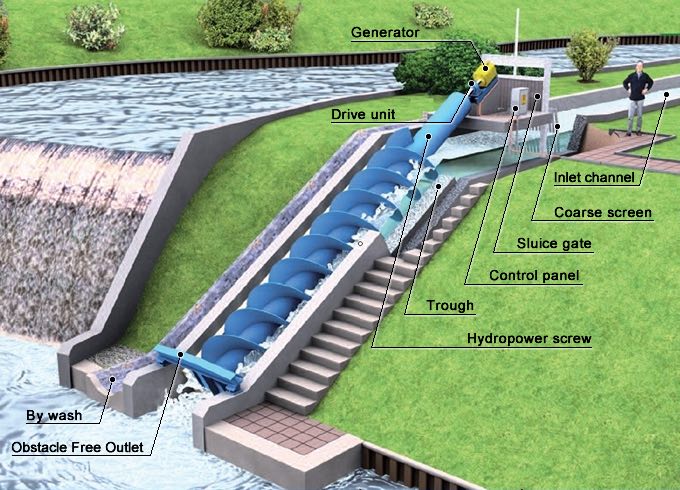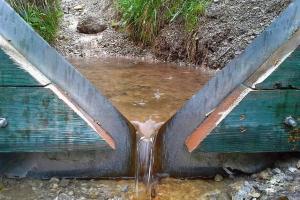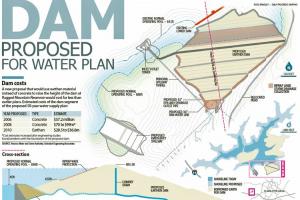Impact of Small Hydropower Projects
Small hydropower projects, also known as mini hydropower projects, refer to the development of small-scale hydroelectric power generation facilities. These projects typically have a capacity of less than 10 megawatts (MW). The impacts of small hydropower projects can vary depending on various factors, including the size and design of the project, location, environmental context, and mitigation measures employed. Here are some potential impacts of small hydropower projects:
Renewable energy can make a significant contribution to carbon dioxide (CO2) emissions reduction. It should be accepted that although through having no emissions of CO2 and other pollutants, electricity production in small hydro plants is environmentally rewarding, the fact is that due to their location in sensitive areas, local impacts are not always negligible.
It is recommended to establish a permanent dialogue with the environmental authorities as a very first step in the design phase. It would be convenient to provide a few guidelines that will help the designer to propose mitigating measures that can be agreed with the authorities. A high-head SHP project in mountains, being situated in a highly sensitive area, is more likely to generate impact that an integral low head scheme in a valley. The tail water from the power plant reenters the river and entire areas of the river may be bypassed by a large volume of water, when the plant is in operation.
The exhaustive descriptions of possible impacts due to construction of different components of a small hydro-power plant are briefly given. With a well arrangement of system of power plant structures, new environmental impacts will not be introduced.

Construction Effects of Small Hydropower Projects
The impact generated by the construction of hydraulic structures includes the loss of ground, the construction and maintenance of roads, working platforms, excavation works, blasting, and concrete manufacturing plants. Other nonnegligible impacts are the barrier effect and the alteration of flow consequent to river regulation that did not exist before. To mitigate such impacts it is recommended that the excavation work should be undertaken in the dry season and the disturbed ground restored as soon as possible. In any case, these impacts are always transitory and do not constitute a serious obstacle to the administrative authorization procedure.
In view of its protective role against river erosion, it is wise to restore and reinforce the riverbank vegetation that may have been damaged during the construction of the structures. The ground should be re-vegetated with indigenous species, better adapted to the local conditions.
The impact assessment study should take count of the effects of jettisoning excavated material in the stream. Vehicle emissions, excavation dust, high noise level, and other minor burdens contribute to damage to the environment when the scheme is located in sensitive areas. To mitigate the above impacts the traffic operation must be carefully planned.
Noise impact
The allowable level of noise depends on the local population or on an isolated house near the powerhouse. The noise comes mainly from the turbines and Nowadays noise inside the powerhouse can be reduced, if necessary, by insulation of the powerhouse walls and roof. The operation of small hydropower projects can generate noise and alter the visual aesthetics of the landscape. The construction of infrastructure and installation of turbines and transmission lines can be visually intrusive. Mitigation measures such as noise barriers and appropriate siting can help minimize these impacts.
Landscape Impact of Small Hydropower Projects
Each of the components that comprise a hydro scheme has the potential to create a change in the visual impact of the site by introducing contrasting forms, lines, colors, or textures. The design, location, and appearance of any one feature may well determine the level of public acceptance for the entire scheme. Some of these components may be covered by landform or a layer of re-vegetated terrain.
Small hydropower projects require the construction of infrastructure, including dams, weirs, intake structures, penstocks, and powerhouses. These developments may require land acquisition and can result in changes to land use patterns, including the flooding of areas upstream of the dam. Construction activities can also lead to habitat fragmentation and disturbance to terrestrial ecosystems. Proper planning and environmental impact assessments can help minimize these effects and ensure sustainable land use practices.
The penstock is usually the main cause of nuisance. Its layout must be carefully studied using every natural feature such as rocks, ground, and vegetation to shroud it, and if there is no other solution, painting it so as to minimize contrast with the background. If the penstock can be buried, this is usually a good solution from an environmental point of view. Expansion joints and concrete anchor blocks could then be reduced or eliminated; the ground is returned to its original state and the pipe does not form a barrier to the passage of wildlife especially in forests. All components of an SHP should be skilfully inserted into the landscape. Any mitigation strategies should be incorporated into the project, usually without too much extra cost to facilitate permit approval.
Biological Impacts of Small Dams
The reduction in flow in the stream bed between the intake and the tail race downstream of the powerhouse may affect the life of fish if they exist in the river. In a high flow period, the water spills over the weir and floods the streambed. Such frequent changes from semi-dry to wet conditions can make problems for aquatic life. It must be underlined that if any of the biological methods for the definition of the residual flow value is implemented, there is a possibility for the developer to decrease the level of the required discharge, by modifying the physical structure of the stream bed. Actually growing trees on the riverbanks to provide shadowed areas, depositing gravel in the stream bed to improve the substratum, reinforcing the riverside shrubs to fight erosion, etc.
A fish passage could be designed to reopen fish migration, which is a firm component of their life cycle. Effective fish passage design for a specific site requires good communication between engineers and biologists and a thorough understanding of site characteristics.
Renewable Energy Generation:
Small hydropower projects contribute to renewable energy generation, which helps reduce reliance on fossil fuels and decrease greenhouse gas emissions. They provide a reliable and consistent source of electricity, particularly in rural areas where grid connectivity may be limited.
Environmental Impact on Rivers and Aquatic Ecosystems:
The construction of small hydropower projects can alter the natural flow regime of rivers, impacting aquatic ecosystems and habitats. It can lead to changes in water levels, flow patterns, and sediment transport. These alterations can affect fish migration, spawning, and other aquatic life processes. However, the environmental impact can be minimized through proper project design, including fish passages, environmental flow releases, and sediment management measures.
Changes in River Hydrology:
Small hydropower projects can modify the hydrology of rivers, particularly in the immediate vicinity of the project. Water diversion and impoundment for power generation can result in reduced downstream flows and altered flow patterns. This can impact downstream water availability, water quality, and ecological processes. Proper management of water releases and downstream flow requirements can help mitigate these impacts.
Social and Cultural Impacts:
Small hydropower projects can have social and cultural impacts on local communities. They can provide economic opportunities, such as job creation and income generation, particularly in rural areas. However, they may also result in the displacement of communities or disruption of traditional livelihoods and cultural practices. Adequate consultation, community engagement, and benefit-sharing mechanisms are important to address and mitigate these impacts.












